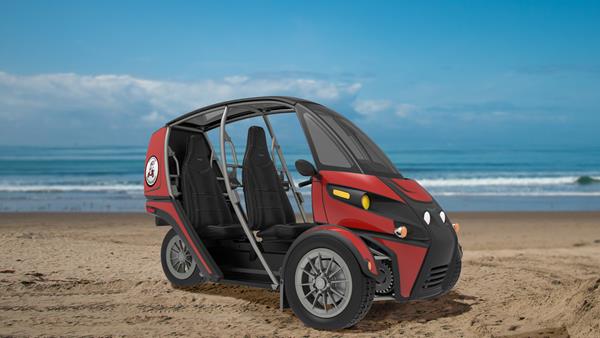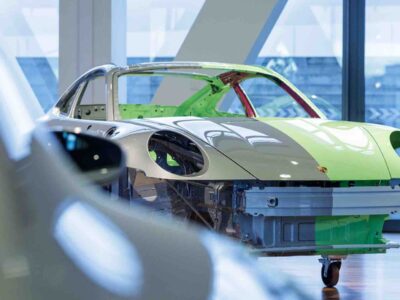City driving has always been a difficult endeavor. Living in not-so-car-friendly New York City, Washington, D.C., or Boston, you’ve been urged to walk and use public transportation. If you live in a city like Los Angeles or Atlanta — where you need a car to get around quickly — you might suffer long wait times in traffic and contribute to higher emission rates. These issues have created an emphasis on finding alternative zero-emission vehicles that can maneuver through city streets easily. Meet the next fashionable and affordable electric vehicle (EV): the Fun Utility Vehicle (FUV) by Arcimoto.
For the past 15 years, Acrimoto has been designing and piloting the return of the three-wheeled EV. The FUV is the pinnacle of the company’s success in the electric landscape. It aims to tackle short-distance city driving that contributes to traffic and pollution problems many urban areas struggle with daily. The reduced size makes it ideal for traveling through narrow city streets, but the small, two-seat, and three-wheeled vehicles aren’t meant to be a civilian transporter. Rather, they’re supposed to be a way to get around more efficiently and cleanly.
The FUV has a range of 102 city miles before it needs to be charged. The batteries get around 173.7 MPGe and have a starting MSRP of $17,900. All you need is a wall outlet for the charger and a good place to park.
“The FUV is our flagship consumer vehicle and perhaps the easiest and most affordable way to start driving electric today,” Jonathan Miller, Acrimoto’s communications associate, told Consensus. “Most of our customers charge at home overnight and wake up to a fully charged FUV every morning for their daily driving needs.”
The FUV isn’t just for fun, but it’s also effective transportation for businesses like food delivery services, first responders, and filmmaking crews.
The popular burger chain Wahlburger’s in Key West, FL, purchased a Delivarator model for seamless and timely food delivery on the island town. JOCO in New York City is doing the same with a pilot program announced in May, a quick way to carve through Midtown traffic and get people their orders quickly. With a top speed of 75 miles per hour, the FUV fits business models built on fast, reliable services.
While not every state has the approval to sell its vehicles, Arcimoto says many locations have already felt the benefits of the FUV’s scaled-down design and performance. “In our open states of California, Oregon, Washington, Nevada, Arizona, and Florida, we see a strong sales correlation where EVs are most popular, as well as in beach cities and retirement communities: major markets like Portland, Oregon, San Francisco Bay Area, Orange County, and San Diego, as well as the Villages in Florida, for example,” Miller explained.
With short-distance travel in mind, the FUV was made for quick trips to the store or a shopping spree. If you’re more adventurous, there are Roadsters for cruising and ones with attachments for cargo hauling.
One of the bigger obstacles for Acrimoto is not so much consumer interest but state vehicle classifications. Many states put the FUV in the same category as motorcycles, meaning would-be consumers have to obtain a motorcycle license to operate one. However, the company has lobbied in several states, including Hawaii, which is reclassifying the EVs as “autocycles,” which only require a standard driver’s license, opening access to more drivers.





